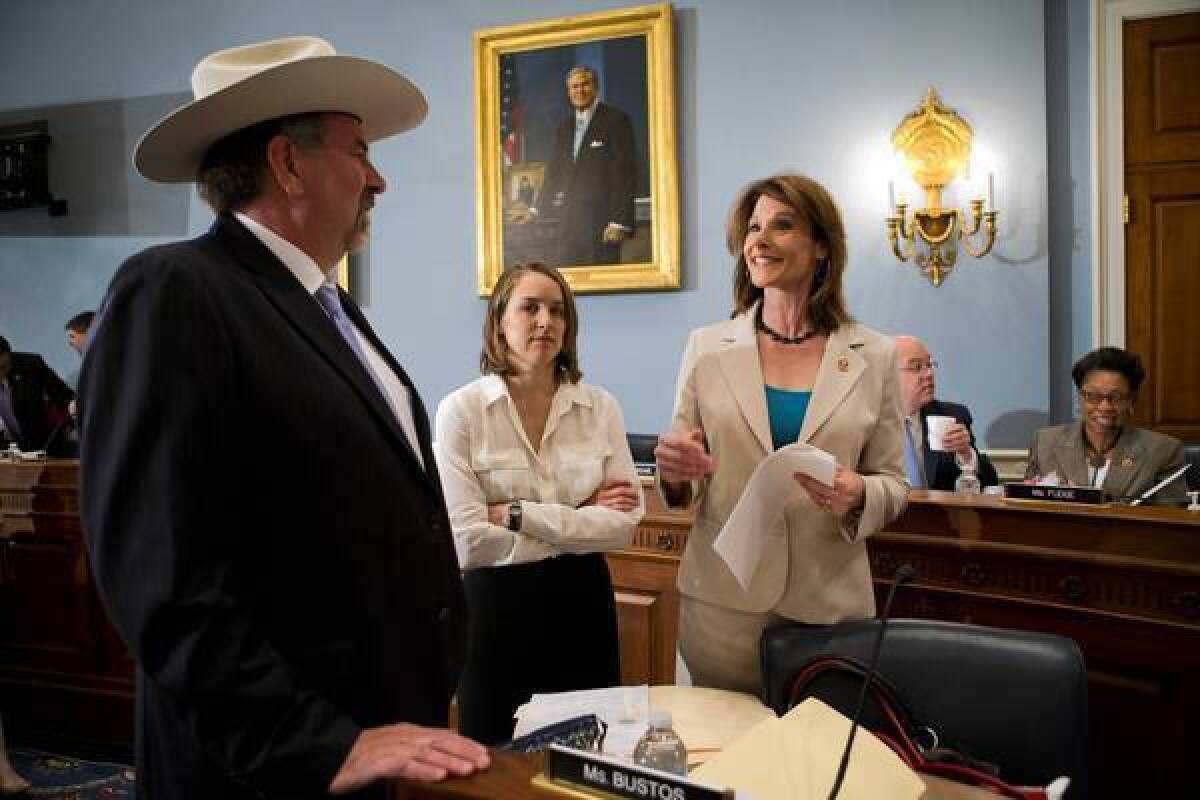Farm bill: Still millions for fat cats in Congress, cuts for the poor

Backers of the new farm bill, approved by the House today and destined for consideration by the Senate next week, are patting themselves on the back for saving billions by eliminating a huge wasteful farm subsidy program.
Don’t believe the hype. The conservative American Enterprise Institute says the measure could cost taxpayers $15 billion more per year than do existing crop programs, much of it going to the wealthiest farmers and the crop insurance industry. The AEI calls the farm bill a “bait and switch” scheme and the product of “beggar thy neighbor cronyism.” And that’s from a pro-business organization.
But the AEI doesn’t even address what may be the worst aspect of the farm bill, which is its cuts to food stamps. The Supplemental Nutrition Assistance Program (that’s the formal name for food stamps) will be cut by $8 billion over 10 years by the bill agreed upon in conference between representatives and senators.
That’s twice what the Senate originally proposed, but a fraction of the nearly $40 billion the GOP House voted to cut last year. Those cuts didn’t go into effect, but a cut of $5 billion in the current fiscal year was implemented via Congressional inaction last November. That meant the loss of 21 meals a month for a family of four, and affected 47 million needy Americans.
That should provide some perspective to the terms of the new farm bill. As we’ve reported in the past, the farm bill often has given rise to some of the most coldhearted and hypocritical debate in Congress.
Our favorite poster boy among members of Congress who belly up to the crop-subsidy bar while crabbing about feeding the needy through SNAP has been California’s own Rep. Doug LaMalfa (R-Richvale), whose farming family collected a sweet $5.1 million in federal crop subsidies between 1995 and 2012. By then he had come to the realization that food stamp recipients needed to tighten their belts in the name of governmental economizing.
LaMalfa is still ticked off that food stamp recipients aren’t been squeezed more. “While I would have preferred a bill that generated more savings and included larger reforms in the food stamp system, I believe that we’ve achieved as much as the Democrat-led Senate will allow,” he said after Wednesday’s House vote. Then he asked for sympathy for the pain and destitution California farmers are experiencing because of the drought.
But LaMalfa’s not the only farm bill hypocrite. Among the Republicans inveighing against the latest proposal is Rep. Marlin Stutzman (R-Ind.), who grouses that combining farm subsidies and SNAP in the same bill contributes to “logrolling.” He prefers that the programs be debated separately, presumably so that food stamps can be slashed without farm aid being held for ransom. Stutzman has collected $200,000, and possibly more, in farm aid since 1995.
The AEI’s analysis of the new bill says its one clear cutback in farm aid is the elimination of direct payments to farmers. Some 75% of those payments went to the richest 10% of farm owners.
But the $5 billion in annual savings there, AEI says, could be swamped by the higher costs of three new programs created by the farm bill. Among them are programs that would “essentially guarantee that farmers’ revenues never fall below 86% of what they earned in previous years, when crop prices were at historical highs.” Another program would be “much more lucrative for farmers” than the version it replaces by guaranteeing farmers “much higher prices for covered crops.”
AEI supports a proposal by Sens. Tom Coburn (R, Okla.) and Dick Durbin (D-Ill.) that would cap taxpayer subsidies for crop insurance for the richest farmers, cutting them as much as 15%. That’s a step in the right direction, the organization says, but it’s pretty meager--and it’s not part of the farm bill.
The bottom line: Rep. LaMalfa and his fellow congressional farmers aren’t in danger of needing food stamps themselves any time soon.
More to Read
Sign up for Essential California
The most important California stories and recommendations in your inbox every morning.
You may occasionally receive promotional content from the Los Angeles Times.











